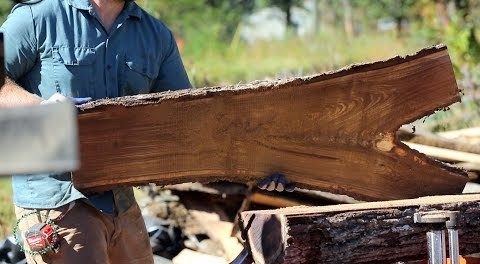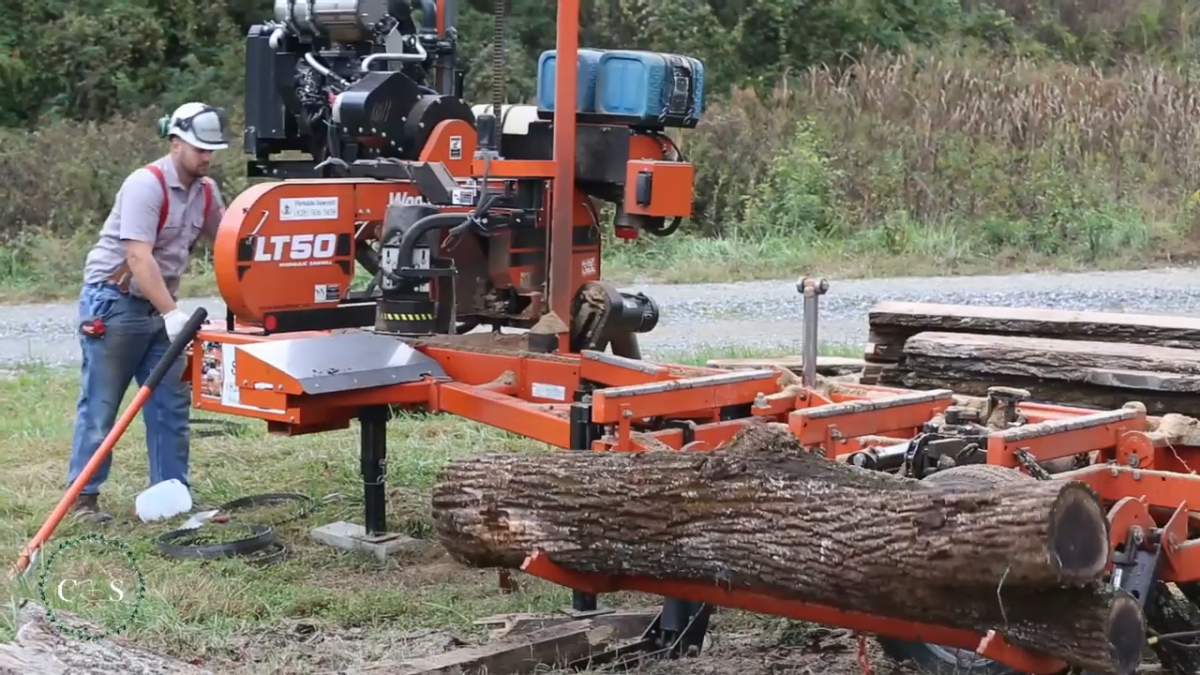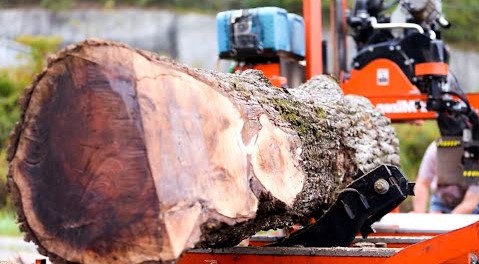A Guide to Selling Rough Cut Lumber | Sawmill Business ft. Charley and Sarah
Today we talk about selling lumber, while also making money at it courtesy of some great advice from Charley of Charlie and Sarah!
When you first get a sawmill, the primary ways to make money are selling lumber or cutting for people. However, cutting for people is kind of tricky, because you’ll want to have some experience before you start doing that.
If you’re cutting by the board foot and you take your time it doesn’t really matter too much. But you don’t want to mess up other people’s logs, especially if they’re nice logs or if they have sentimental value.
It helps to know what you’re doing, especially if you’re cutting by the hour, you definitely need to have some experience.
It’s a bit different if you’re cutting for yourself or have your own projects, if you have your own demand, that’s great. But when it comes to paying for the mill, the quickest way is to sell lumber.
Variety is Key
In my experience, variety really helps out. This market depends on what’s in your area and what people want to buy, and you’ll have to figure that out for yourself, but I can say having variety is really good. Variety in species, but also thickness, width, length, sizes, and quality.
So if you just put an ad on Craigslist, you’re gonna get everyone from those wanting big tabletops to those interested in little pieces of firewood. If you’ve got everything in between you have multiple offers. So of course you have your slabs and that’s your big-ticket item, but offer some low ticket items as well.
There’s no dispute that the big stuff is where a lot of money is, it’s just that you can only sell so much of that. Generally, I found with slabs, people tend to not want oak or pine or poplars or anything like that. Generally, people getting slabs are wanting cherries, hickories, walnuts, maples, and other less common species.
A couple of things that are less common or less known is 4×4’s, I have had great success selling 4×4’s. Pretty much everyone who has purchased a slab has also taken some 4×4’s.
As far as other things, mantle’s are good to have in stock. People that are looking for mantle’s, are usually wives that are on Pinterest and see something and then want it in their house. So if you get some cool stuff, 6×8, 6×4 anything around 6 or 7 feet long, that’s perfect. You can also do 7 or 8-foot stock to have a lot of variety.
As far as other stuff, I found luck with selling 3×3’s about 12 or 24 inches long with a bunch of different varieties in terms of species and quality.

Don’t Make it Hard for People to Give You Their Money
Having some finished products, if you got the means to do it, even doing something small like cross-cut branch coasters and selling them for $15 or $20 a set will bring in a lot of extra revenue. Your furniture makers aren’t after that stuff, but when they come in with their spouse or friend, it’s something cool. Also, it gives the opportunity for you to solve your customer’s problems like “You know, we’re going to so and so’s birthday party next week, let’s get this as a gift.” Same thing with having cheese plates and cutting boards.
The other important thing is to take credit cards. Take credit cards, cash is great, but have a credit card available. I lost so many sales from not taking it, but now the number of extra sales I’ve made strictly because I take credit cards has made it so I’d never make that mistake again. Someone will show up with $200 cash. They’ll start looking around.
“Oh, hey, this is cool and all but hey, I only got 200 bucks.”
“I take credit cards.”
Done.
It opens the door. You can charge them the fee, square PayPal. I use QuickBooks now, but people take credit cards, make it easy for the customer to buy your stuff.
Honestly, I just stopped charging the fee. I’ll just eat the 3%, it’s not that big of a deal especially when it’s allowed someone to spend $400 they wouldn’t have otherwise. That’s the cost of doing business. If that’s going to break it, and you need to make your prices higher, you need to price that in and assume that somebody is going to pay with a credit card and, and deal with it.

Other Best Business Practices
When you’re organizing your lumber, try to have a variety accessible to your customers, if you have a lumber stack and the type they want is on the bottom they may be deterred by that. This is a tough problem because space is always an issue no matter how much you’re working with it feels like when it comes to lumber, so do your best and try to make everything accessible.
Also, if you’re selling green lumber, make sure to educate the customer. A lot of woodworkers are very familiar with it, but not everybody is.
So something you don’t want to do is sell a piece of green lumber and then have somebody thinking it’s good to go, not realizing or not knowing what’s involved with it. Then they’re going to try and make a table with it and when all of a sudden, it cracks or bows, bends, and breaks it’s a problem.
Not only is all that energy, time, and money wasted, but because they didn’t dry it or acclimate it properly, they’re going to blame you. It’s not your fault, it’s their fault, but you’re going to get the blame in their eyes, and then you have an unsatisfied customer who thinks you have a bad product.
So you need to cover your ass, at least give them the disclaimer that this is green lumber and it’s still gonna dry and cure depending on what they’re doing. Also, don’t forget to tell them you’re selling it cheaper because it is not dried.
Great tips from Charley of Charley and Sarah! Be sure to subscribe!


